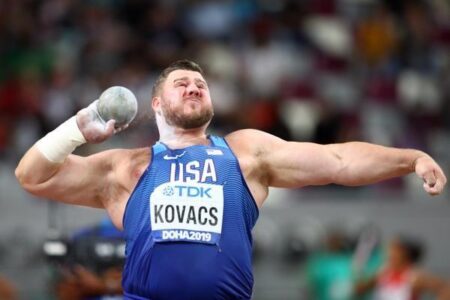Elite endurance athletes meticulously tailor their training to optimize performance across the competitive season. A recent study published in Frontiers sheds new light on how these athletes distribute their training volumes across different intensity zones during various phases of the season. By analyzing detailed training data, the research reveals distinct patterns that balance low-, moderate-, and high-intensity efforts, offering valuable insights into the strategic planning behind peak endurance conditioning. This investigation not only clarifies common practices among top performers but also provides practical guidance for athletes and coaches aiming to maximize results through periodized training.
Timing and Intensity Strategies Elite Endurance Athletes Use Through Seasonal Phases
Elite endurance athletes meticulously manipulate the distribution of training intensities to maximize performance outcomes throughout the annual cycle. During the preparation phase, a predominant emphasis is placed on low-intensity, high-volume sessions, accounting for approximately 75-80% of total training time. This base-building period prioritizes aerobic capacity and muscular endurance, gradually enhancing the athlete’s ability to sustain prolonged efforts. Moderate-intensity work, incorporated at about 15%, serves to bridge the gap between steady endurance and threshold pace, while high-intensity intervals remain minimal, typically under 10%, aiming to limit fatigue and foster recovery. Such strategic intensity manipulation minimizes overtraining risks and optimizes physiological adaptations.
As the season progresses to the competition phase, the training intensity distribution shifts dramatically. High-intensity training surges to represent nearly 35-40% of weekly sessions, focusing on race-specific power output and speed endurance. Moderate intensity maintains a steady role, around 30-35%, facilitating recovery while still stimulating aerobic improvements. Meanwhile, low-intensity training is reduced to roughly 30%, providing necessary active recovery without sacrificing conditioning. The following table encapsulates this phased approach, illustrating the dynamic reallocation of effort that characterizes world-class endurance periodization:
| Seasonal Phase | Low Intensity (%) | Moderate Intensity (%) | High Intensity (%) |
|---|---|---|---|
| Preparation | 75-80 | 15 | 5-10 |
| Competition | 25-30 | 30-35 | 35-40 |
| Transition/Recovery | 85-90 | 5-10 | 0-5 |
- Periodized intensity shifts prevent plateaus and injury while refining peak performance.
- High-intensity sessions are concentrated closer to competition to simulate race demands.
- Recovery phases emphasize low-intensity volume to restore physiological balance.
Balancing Low, Moderate, and High Intensity Training for Optimal Performance Gains
Elite endurance athletes meticulously structure their training by distributing efforts across low, moderate, and high intensity zones to maximize adaptation while minimizing fatigue. During the preparatory phase, a larger proportion of training emphasizes low-intensity efforts, typically accounting for around 75-80% of total volume. This foundation phase fosters aerobic base development and aids recovery. Moderate intensity sessions, often 10-15%, are strategically integrated to improve lactate threshold without causing excessive strain. High-intensity intervals are limited but purposeful, representing roughly 5-10%, focusing on neuromuscular activation and power.
As the season progresses into the competition phase, this distribution shifts significantly. The share of high-intensity training elevates to about 20-30%, critical for sharpening race-specific performance and enhancing VO2 max. Meanwhile, moderate intensity training holds steady or slightly increases to maintain lactate clearance efficiency. Low-intensity volume decreases but remains essential for active recovery and maintaining endurance. This dynamic balance ensures athletes peak at the right moments, aligning physiological adaptations with competitive demands.
| Season Phase | Low Intensity (%) | Moderate Intensity (%) | High Intensity (%) |
|---|---|---|---|
| Preparatory | 75-80 | 10-15 | 5-10 |
| Competition | 50-60 | 15-20 | 20-30 |
- Low Intensity: Enhances aerobic endurance and recovery.
- Moderate Intensity: Improves lactate threshold and sustained power.
- High Intensity: Boosts maximal oxygen uptake and race pace capabilities.
Tailored Training Recommendations to Maximize Endurance Across Preseason to Competition
Elite endurance athletes strategically adjust their training intensity distribution (TID) throughout the year to optimize performance peaks during competition. During the preseason phase, a greater emphasis is placed on low-intensity training (LIT), often constituting up to 80% of total volume. This approach facilitates the development of aerobic base while minimizing fatigue. Moderate-intensity training (MIT) and high-intensity training (HIT) are carefully incorporated in smaller doses to stimulate physiological adaptations without compromising recovery.
Transitioning into the competition phase, the balance shifts markedly. Athletes increase the proportion of HIT to sharpen race-specific fitness, with MIT serving as a bridge to maintain endurance and speed. This shifting profile supports peak anaerobic power and lactate threshold improvements critical for optimal performance. Below is a simplified model of how intensity distribution evolves across phases:
| Season Phase | LIT (%) | MIT (%) | HIT (%) |
|---|---|---|---|
| Preseason | 75-85 | 10-15 | 5-10 |
| Transition | 60-70 | 15-25 | 15-20 |
| Competition | 50-60 | 20-30 | 20-30 |
- Low Intensity Training (LIT): focuses on aerobic capacity and recovery.
- Moderate Intensity Training (MIT): balances fatigue and adaptation.
- High Intensity Training (HIT): targets maximal aerobic capacity and race pace.
In Summary
In summary, the study published in Frontiers sheds new light on how elite endurance athletes strategically allocate their training intensity throughout various phases of the season. By carefully balancing low, moderate, and high-intensity workouts, these athletes optimize performance and recovery, underscoring the nuanced approach required to excel at the highest levels of endurance sport. As coaches and athletes continue to seek the most effective training models, this research offers valuable insights that could shape future practices and enhance competitive outcomes across disciplines.





